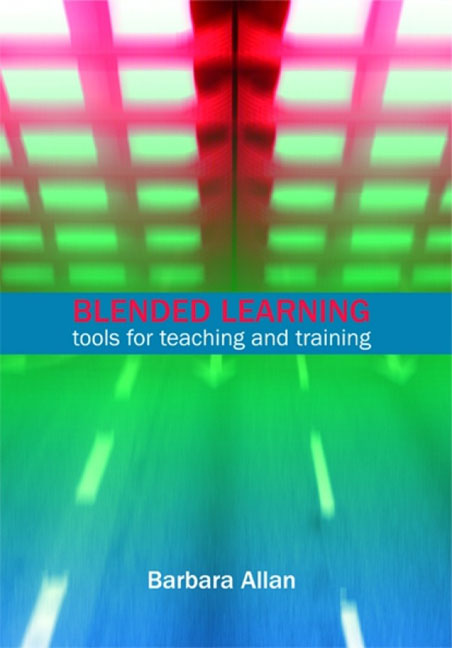Book contents
- Frontmatter
- Contents
- List of figures
- List of tables
- Acknowledgements
- 1 Introduction
- 2 Tools and technologies
- 3 Models of teaching and learning
- 4 Planning and designing blended learning programmes
- 5 Planning and designing learning activities
- 6 Working with groups
- 7 Working as a tutor
- 8 Communities of practice
- 9 Managing blended learning projects
- Index
- Frontmatter
- Contents
- List of figures
- List of tables
- Acknowledgements
- 1 Introduction
- 2 Tools and technologies
- 3 Models of teaching and learning
- 4 Planning and designing blended learning programmes
- 5 Planning and designing learning activities
- 6 Working with groups
- 7 Working as a tutor
- 8 Communities of practice
- 9 Managing blended learning projects
- Index
Summary
Introduction
The purpose of this chapter is to explore issues associated with working as a tutor in a blended learning programme. Reading this chapter will enable library and information workers who are involved in the design and delivery of blended learning programmes to have an understanding of their role and responsibilities. Library and information staff may deliver or support teaching and learning in a blended learning programme in a number of different ways:
• Lead and facilitate all learning and teaching activities, including face-to-face and/or online provision.
• Co-facilitate a variety of face-to-face and/or e-learning activities as part of a blended learning programme delivered by a multi-professional team.
• Provide face-to-face or online support to learners who are accessing online learning opportunities using ICT in the library or e-learning centre.
• Provide additional support to a programme facilitated by another tutor, e.g. face-to-face on a help desk, or via telephone, e-mail or a virtual learning environment.
Information workers who are involved in facilitating and supporting blended learning programmes need to develop and use a range of teaching and training skills. Although working in a virtual environment requires many of the same skills and techniques that are used in a face-to-face environment, it also requires the development of new approaches to communicating with learners. This chapter will consider the following topics: principles of tutoring; e-tutoring; presentations; working with a co-tutor; and student helpers.
Principles of tutoring
In recent years the landscape of education and training has become more complex as models of teaching and learning have shifted from a didactic tutor-centred model of learning to one that is more student-centred. There has also been a shift from face-to-face or e-learning programmes to blended learning programmes. In addition, individual library and information workers may be working in a context where they are required to work collaboratively in teams that may be designing learning programmes based on different underlying pedagogies. Consequently, this means that tutors must be extremely flexible and adept in working with a range of pedagogies and different approaches to teaching and learning. Figure 7.1 illustrates two extreme approaches to teaching and learning (from Goodyear, 2000), and in today's world tutors need to be able to span both of these extremes.
- Type
- Chapter
- Information
- Blended LearningTools for teaching and training, pp. 151 - 172Publisher: FacetPrint publication year: 2007



